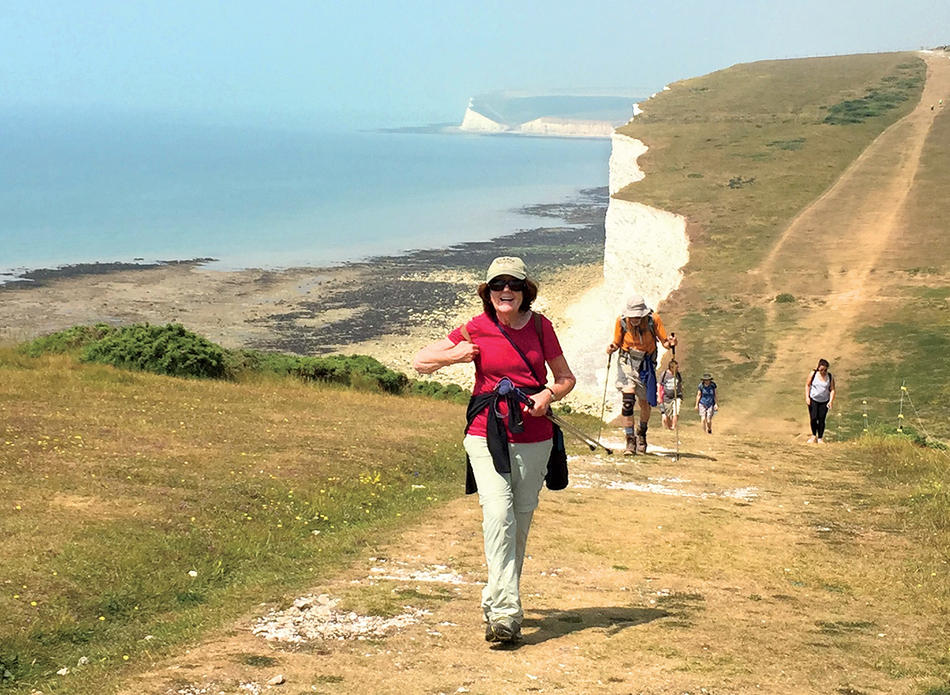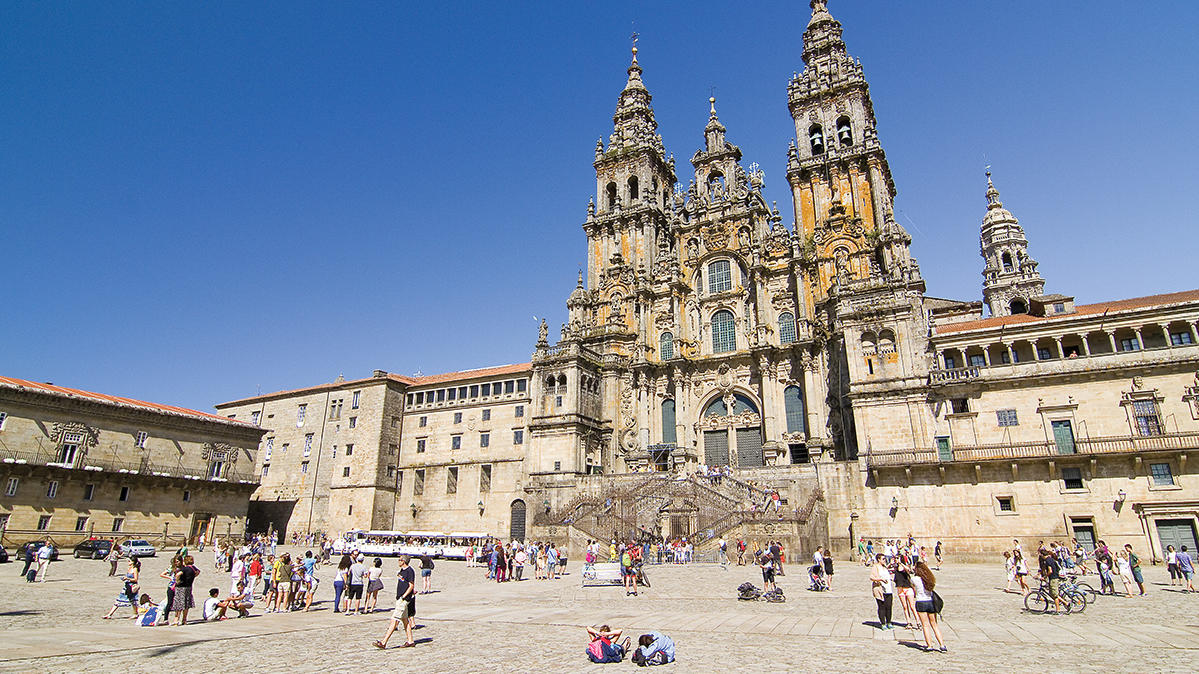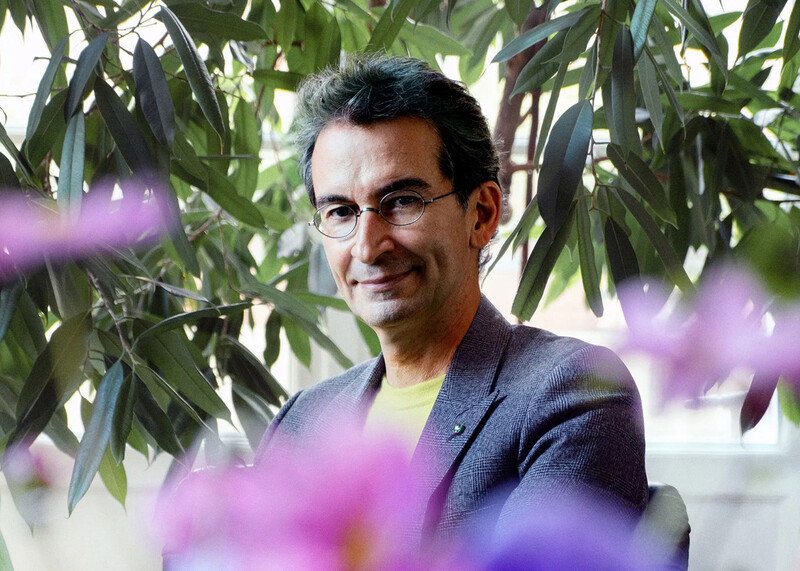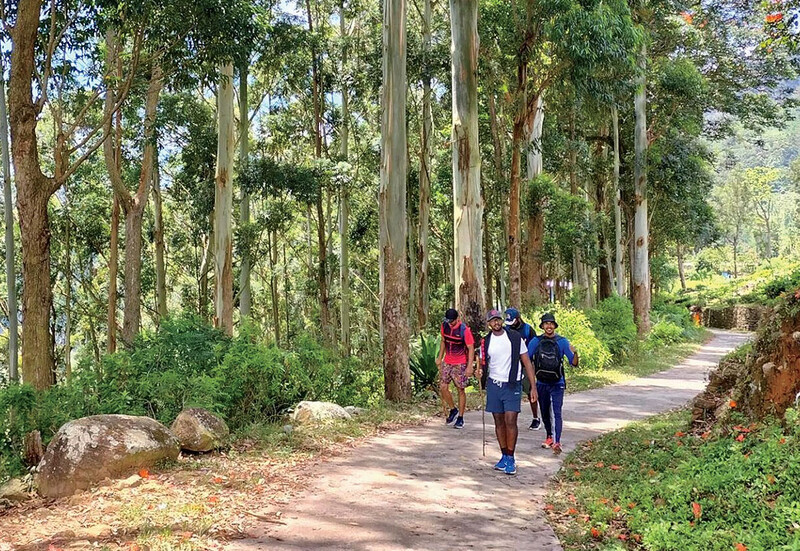Olivia Pittet ’79GSAS has followed the medieval pilgrimage route to the Cathedral of Santiago de Compostela in Galicia, Spain, three times. We asked her to tell us more about the famous trail and share tips from her new book, The Camino Made Easy: Reflections of a Parador Pilgrim.
Can you give us a brief history of the Camino Way?
It’s a convoluted and mostly apocryphal story, but here goes. After Jesus’s death, the apostle James went to Spain to preach the Gospel, then returned to Jerusalem, where he was beheaded. Legend has it that his headless corpse made its way back to Spain in a rudderless boat and was buried in Galicia. This story dropped off the religious radar for some seven hundred years until it was reclaimed as a political rallying point for Spaniards in their conquest of the Moors. James became Spain’s patron saint, and Catholics made pilgrimages to his shrine. The Way of St. James (El Camino de Santiago) eventually grew into the third most important pilgrimage in Christendom after Jerusalem and Rome.
Is there one specific route?
In the Middle Ages, people just set out from their front doors, so there are a number of routes, but the most popular one — the one we know as the Camino today — is a five-hundred-mile trek from the foothills of the French Pyrenees across northwest Spain.
That’s a long way. How long does it take?
That depends on how fast you walk, but basically four or five weeks. The original pilgrims spent three months on the trail. My daughter, a marathon runner, did it in twenty-seven days. You don’t even have to walk the whole way. To get a compostela, or certificate of completion, you just have to walk the last hundred kilometers, or sixty-two miles.
Is the Camino accessible to everyone?
Yes. It isn’t a wilderness trail. It goes through major World Heritage cities like Burgos, León, and Santiago. More than two hundred thousand people walk the Camino every year. They each do it in their own way. You can walk with a backpack, staying in the auberges or hostels. You can do it by horseback, by bike, or with a donkey to carry your pack. You can join a group on a cultural walking tour and have your luggage transported from inn to inn as my husband and I did. You can even do it in stages over several vacations.
Are all these walkers pilgrims?
Originally the Camino was a pilgrimage made by Catholics who were doing penance for their sins. Devout Catholics still make the pilgrimage, but a lot of pilgrims consider themselves more spiritual than religious. The Camino also attracts fitness enthusiasts who are taking on a personal challenge and students looking for a cheap summer vacation offering plenty of wine. Any pilgrimage depends on what you bring to it and what you take from it. The Camino Way is not just a journey but a process, and everyone’s is different.
Did your studies at Columbia influence your interest in the Camino?
Very much so. I did my master’s at Columbia, where I specialized in Chaucer and Middle English. I wrote my thesis on another saint’s legend, recounted in St. Erkenwald, a fourteenth-century poem. My love of medieval literature certainly informs my book.
Do you have another pilgrimage in your future?
I will turn eighty in October, and I would like to explore the more Protestant aspects of pilgrimage — not a journey to a specific site but more, in the spirit of John Bunyan, a journey of the soul.
This article appears in the Fall 2019 print edition of Columbia Magazine with the title "Ask an Alum: How to Walk the Walk."




